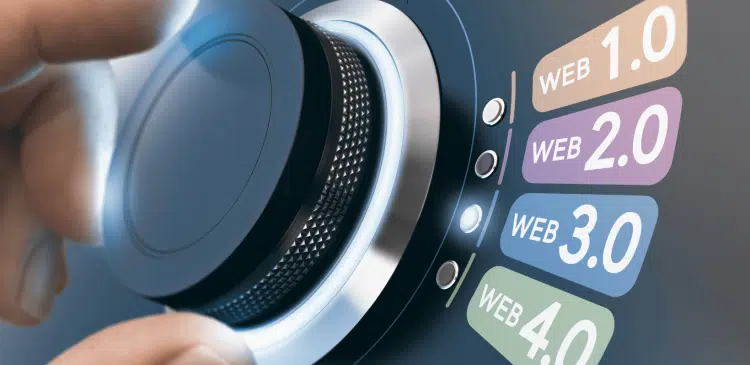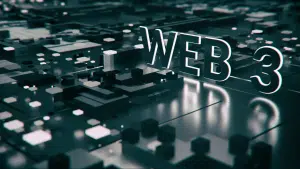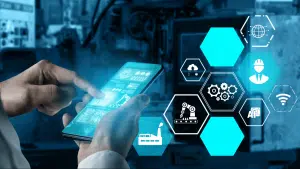Web 3.0 vs. Web 4.0: What’s the Difference?

Specifically, Web 3.0 and Web 4.0 are the subsequent advancements of the web that aim at creating a more intelligent, more connected, and open world wide web. There is, however, one significant difference – both parties have rather intense, revolutionary ideas regarding the further evolution of the enterprise.
What is Web 3.0?
Web 3.0, also known as the Semantic Web, is to make content on the Internet understandable by machines. Some of the critical elements of Web 3.0 include:
– Machine-readable tags that enable portability, that is, specified data can be transferred and used more effectively between websites. It also provides semantics and context to the text.
– AI agents that can understand the content of the information and sort it using natural language processing.
– The idea of apps and data being decentralized and taken away from the grasp of a few large companies. This is made possible by blockchain, a digital technology that is transforming the way business is conducted.

– More connected social media with external sites, more connected applications with other applications, more connected data with other data, and more connected devices.
The first idea of Web 3.0 is intended to make the web experience brighter and help in connecting information more readily to reveal better personalization.
What is Web 4.0?
Web 4.0 is based on the web as a complex and organic environment that would be immediately interfaced with our lives in terms of the virtual and the actual.
Key components include:
– AI that is capable of understanding the context and the reason for an interaction and engaging in conversation with intellectual individuals.
– Integrated digital-virtual environments are those that are fully integrated with natural environments and include VR, AR, and other technologies that build on natural environments.
– Continuous connection and computational resources within the user’s context switching throughout the day.
– Incorporating biological tissue and information processing is a way of combining biology and computing.
– Distributed and fully embedded in the related Internet interactions of sensors, data feeds, and controls.
The primary vision of Web 4.0 is to transform the internet experience into a familiar and enjoyable one with technology as a means to help reason.
Key Differences
Web 3.0 and Web 4.0 are quite similar in terms of their characteristics and the services they offer to their users. There are certain differences in relation to some topics, such as AI, decentralization, and HCI.
Artificial Intelligence Focus
Web 3.0 is more limited to semantic search, agents, and the management of resources at the automatic level. Web 4.0 describes a future where AI has better context awareness and thus more conversational UIs can be used.
Decentralization
This is a fundamental idea of Web 3.0, where there is no focal point of decision making or power. Web 4.0 does not need such decentralization as Web 3.0 and can be more diverse using mixed solutions.
Hardware Integration
Web 4.0 outlines the need to improve the connection between Internet tools and devices and their environment. It is not considered as a component of Web 3.0 vision that these elements can blend coherently and smoothly.
User Experience
Web 4.0 implies that interfaces will be more natural and conversational. Web 3.0 is more focused on the enhancement of the number and the relevance of the information identified and disseminated.
Progress Towards These Visions
Some of the characteristics of Web 3.0 and Web 4.0 are in some measure already present, and features of both will probably coalesce.
Web 3.0 Progress
– New forms of semantic HTML such as microdata and RDFa
– Appearance of more devices, sensors, and the possibilities of Internet connections
– Blockchains pointing to the decentralized paradigms
– Further development of the algorithms of machine learning will assist in the sorting of the content
Web 4.0 Progress
– Some trends are natural language processing capabilities and context-aware artificial intelligence enhancements
– This means that the prototypes of Virtual Reality, Augmented Reality, and Mixed Reality show signs of becoming increasingly sophisticated, offering more immersive and interactive experiences
– More popularity of virtual voice assistants and artificial intelligence agents
– Its first experiments were in brain-computer interfaces
However, there is a long way to go from the complete visions of Web 3.0 or even 4.0; there are many technological challenges left.
Will Web 4.0 Replace Web 3.0?
Web 4.0 should be viewed more as the progression from Web 3.0, with Web 3.0 being a part of the progression rather than being substituted by it. Based on the versions given, Web 4.0 can be conceived as a further evolution based on the semantic and decentralization approach established by Web 3.0 technologies.
Semantic Web, intelligent agents, and integration as core Web 3.0 components will create the foundation for higher levels of intelligence, interfaces, and experience on Web 4.0.
Conclusion
There are some differences between Web 3.0 and Web 4.0, though their common concept is to make the Web of today more functional, more friendly, and more pervasive tomorrow. Web 3.0 focuses on such aspects as decentralization, for example, while Web 4.0 is more friendly and user oriented.
The improvements achieved by Web 3.0 are taken a bit further by Web 4.0 as it serves as the next step to provide even more integrated intelligence and connectivity by means of natural language processing, VR/AR, and 4.0 interfaces.
The blueprints for these other phases of the Web are exciting, and change will most probably occur gradually. But, if possible, Web 3.0 and Web 4.0 are the creation of more intelligent and more sensible experiences on the World Wide Web.


 Bill Yeager, Co-Owner of High Point SEO & Marketing in CT
Bill Yeager, Co-Owner of High Point SEO & Marketing in CT